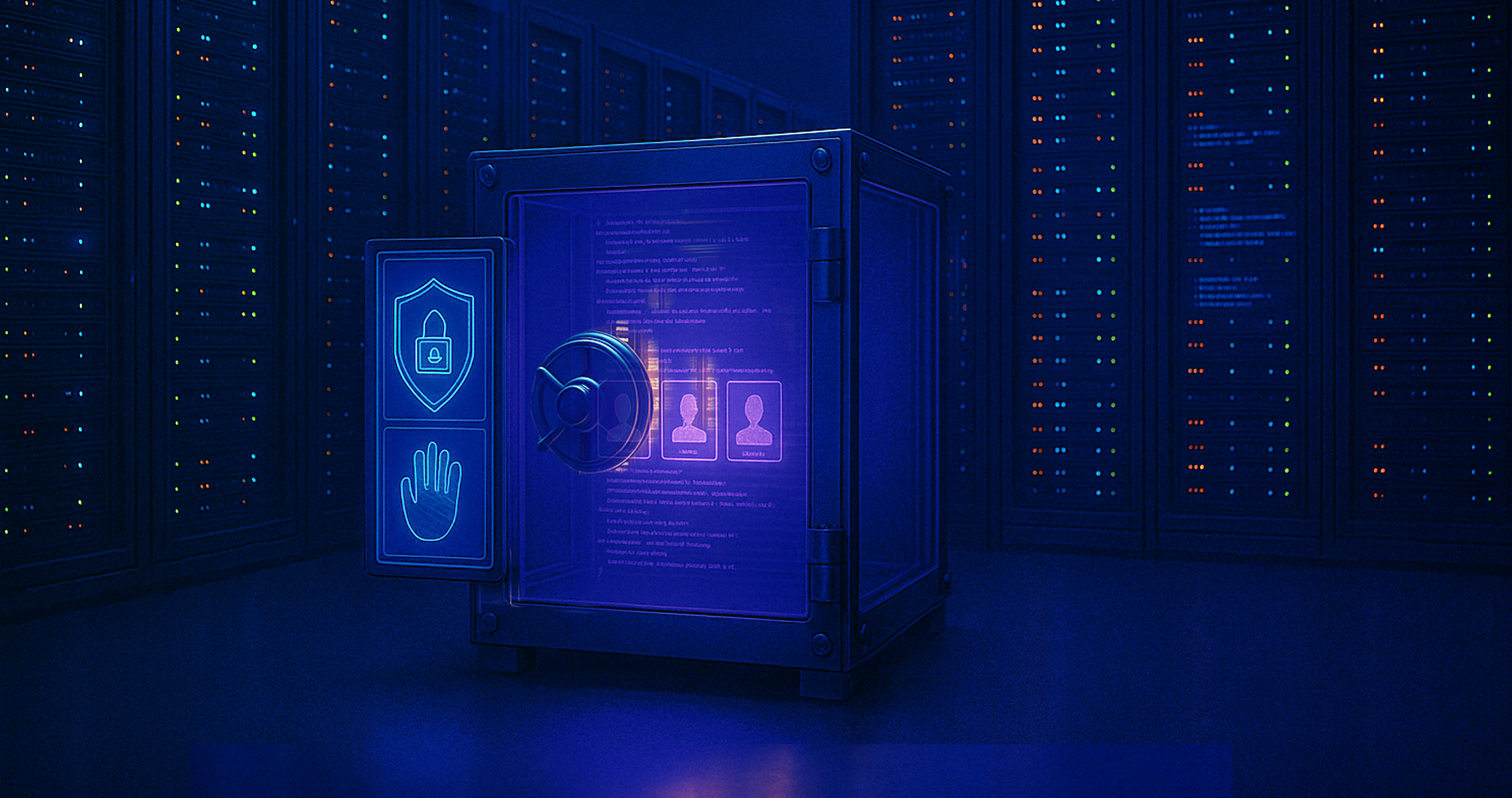Table of contents
In our latest article, we highlight why AI cloud security is critical to avoid multi-million euro fines. AI workloads differ from traditional apps, handling massive datasets and facing stricter regulations like the EU AI Act and GDPR. Common risks include misconfigured storage, shadow AI usage, weak access controls, and opaque subprocessors. NexGen Cloud provides a secure private cloud with single-tenant deployments, EU/UK data residency, enterprise-grade GPU clusters, low-latency networking, and full audit trails—enabling enterprises to train, deploy, and scale AI workloads safely and compliantly.
Your team has just spent six months building an AI model to predict customer churn with 92% accuracy. It’s trained on sensitive customer data like purchase history, service tickets and even anonymised call transcripts.
Launch day comes. The predictions are spot on. The board is impressed.
Then, a week later, your security lead bursts into your office: “Some of our training data is showing up in model outputs. Customers’ personal info. It’s already been posted on a forum.”
The investigation shows it was not a “hacker in a hoodie” but a misconfigured storage bucket in your cloud AI environment.
Now you’re:
- Explaining to the regulator why you breached GDPR.
- Calculating potential fines of up to €20M or 4% of global turnover.
- Drafting a customer apology email while the PR team prepares for headlines.
This is not just “any story” but happened to multiple companies in the last two years. The problem? They treated AI cloud security like traditional cloud security.
Why AI Cloud Security Is Different and Non-Negotiable
If you’ve ever thought, “We already have cloud security policies, so our AI projects are covered”, you’re probably missing a critical blind spot. Traditional cloud security is built for applications, databases and file storage. AI workloads, however are different. They consume more data, expose more interaction points and are about to face the strictest compliance rules technology has ever seen, such as:
The EU AI Act
The EU AI Act aims to be the first large-scale attempt to regulate AI systems based on risk levels. Under this framework, AI systems capable of serving multiple applications are evaluated and categorised according to the level of risk they pose to users. Unacceptable risk categories carry stricter compliance obligations while lower-risk ones require fewer regulatory measures.
If your AI falls into the high-risk category, you’ll be dealing with strict compliance requirements. This includes AI used in:
- Unacceptable risk are AI such as cognitive behavioural manipulation of vulnerable groups, social scoring, biometric categorisation and real-time facial recognition in public spaces. This is banned with limited law enforcement exceptions for serious cases.
- High-risk AI includes systems impacting safety or fundamental rights, like those in toys, aviation, cars, medical devices or critical areas such as infrastructure, education, employment, law enforcement, migration and legal interpretation. These require EU database registration, lifecycle assessments and public complaint mechanisms.
- Transparency rules apply to generative AI like ChatGPT, requiring disclosure of AI-generated content, safeguards against illegal output, summaries of copyrighted training data and labelling of AI-modified media (e.g., deepfakes). High-impact models posing systemic risk must undergo thorough evaluations and report serious incidents to the European Commission.
Failure to comply with the AI practice prohibitions outlined in Article 5 (EU AI Act) may result in fines of up to €35 million or up to 7% of its total worldwide annual turnover from the previous financial year, whichever amount is greater. For some companies, that’s an “out of business” number.
2. GDPR
Many teams treat GDPR as “old news” but in 2025 it is more relevant than ever. That’s because AI increases the risks of data misuse, often with large-scale model training and inference.
GDPR enforces a two-tier penalty structure:
- Up to €10 million or 2% of worldwide turnover for lesser (procedural) violations (Art. 83(4) GDPR)
- Up to €20 million or 4% of worldwide turnover for serious breaches whichever figure is higher (Art. 83(5) GDPR)
3. Sector-Specific Regulations
If you’re in healthcare, finance, or government supply chains, you’ll need to go through additional compliance layers on top of the EU AI Act and GDPR.
For example:
- Healthcare: AI tools must meet UK MDR requirements, NHS Digital standards and clinical safety guidelines before deployment in patient care.
- Finance: Financial institutions deploying AI must comply with EU DORA to ensure operational resilience, security testing and timely reporting of digital incidents.
- Government & Defence: AI in these sectors must follow strict procurement rules, security vetting and export control laws for sensitive technologies.
How AI Cloud Security Failures Actually Happen
Here’s how most enterprises fail at AI cloud security:
- Shared Environments: Multitenancy is not inherently insecure but not all implementations prioritise strong isolation and workload-level security. This might leave room for Model theft via unsecured inference APIs. At Hyperstack, we offer multitenancy while putting strong emphasis on security to ensure your workloads remain protected without compromising performance.
- Shadow AI Usage: Unapproved AI tools by employees can bypass your security framework entirely.
- Weak Access Controls: No MFA, overly broad permissions and missing logging are common pitfalls.
- Opaque Subprocessors: Third-party tools your cloud provider uses could be storing your data outside compliant regions without your knowledge.
- Cross-Border Data Transfers: Even a single API call routed through another region could trigger a compliance violation.
Why Build on a Secure Private Cloud
To protect sensitive AI workloads and comply with strict regulations, enterprises must choose infrastructure that prioritises AI cloud security. NexGen Cloud lets you deploy enterprise scale AI workloads on a secure private cloud by offering:
- Single-tenant deployments
Enterprise can run their AI workloads in isolated environments with dedicated hardware to ensure full control and no resource sharing with external tenants. - EU/UK hosting for full data residency
Enterprise working at scale can keep all its data and processing within the UK or EU to comply with GDPR and cross-border data transfer laws. Hence, they can avoid exposure to non-EU jurisdictions and reduce legal risk. - Private access control and audit trails
Enterprises can also lock access to UK-based personnel only. This helps maintain full visibility with traceable logs for accountability. - No shared tenancy or hidden subprocessors
Enterprises deploying AI at scale must remove the risk of foreign subprocessors and opaque third parties. Your models, data and pipelines run in an environment where you know exactly who has access and who doesn’t. - Low latency and high throughput
NVIDIA Quantum InfiniBand and NVMe storage deliver the bandwidth and speed required for real-time inference, fine-tuning large models and managing massive datasets of enterprise scale. - Enterprise-grade GPU clusters
Train and deploy your models on industry leading GPU clusters for AI such as NVIDIA HGX H100, NVIDIA HGX H200 and reserve capacity for the upcoming NVIDIA Blackwell GB200 NVL72/36.
We are Also SOC 2 Type 1 Certified
NexGen Cloud is now SOC 2 Type 1 certified. This shows our commitment to enterprise-grade data protection and operational integrity. The audit was conducted by a licensed CPA firm which verified that our systems and controls meet the highest security standards.
Book a discovery call with our solutions architect today to learn more.
FAQs
What is AI cloud security?
AI cloud security protects AI workloads, data, and models in cloud environments against breaches, misuse and compliance violations.
How is AI cloud security different from traditional cloud security?
AI workloads handle larger datasets, more interaction points and face stricter compliance laws than traditional apps, databases or storage.
What is GDPR?
The General Data Protection Regulation is the EU’s data privacy law, setting strict rules and penalties for handling personal data.
What fines can non-compliance lead to?
Fines can reach €35M or 7% of annual turnover under the EU AI Act, and €20M under GDPR.
What is multitenancy in cloud computing?
Multitenancy means multiple users share the cloud infrastructure. Security depends on strong isolation and workload-level protections to prevent cross-tenant data leakage.
What is shadow AI?
Shadow AI refers to employees using unapproved AI tools, bypassing enterprise security controls and creating compliance or data leakage risks.
How can enterprises ensure AI compliance?
Use single-tenant secure clouds, EU/UK hosting, strict access controls, compliant subprocessors, and lifecycle monitoring for high-risk AI workloads.

